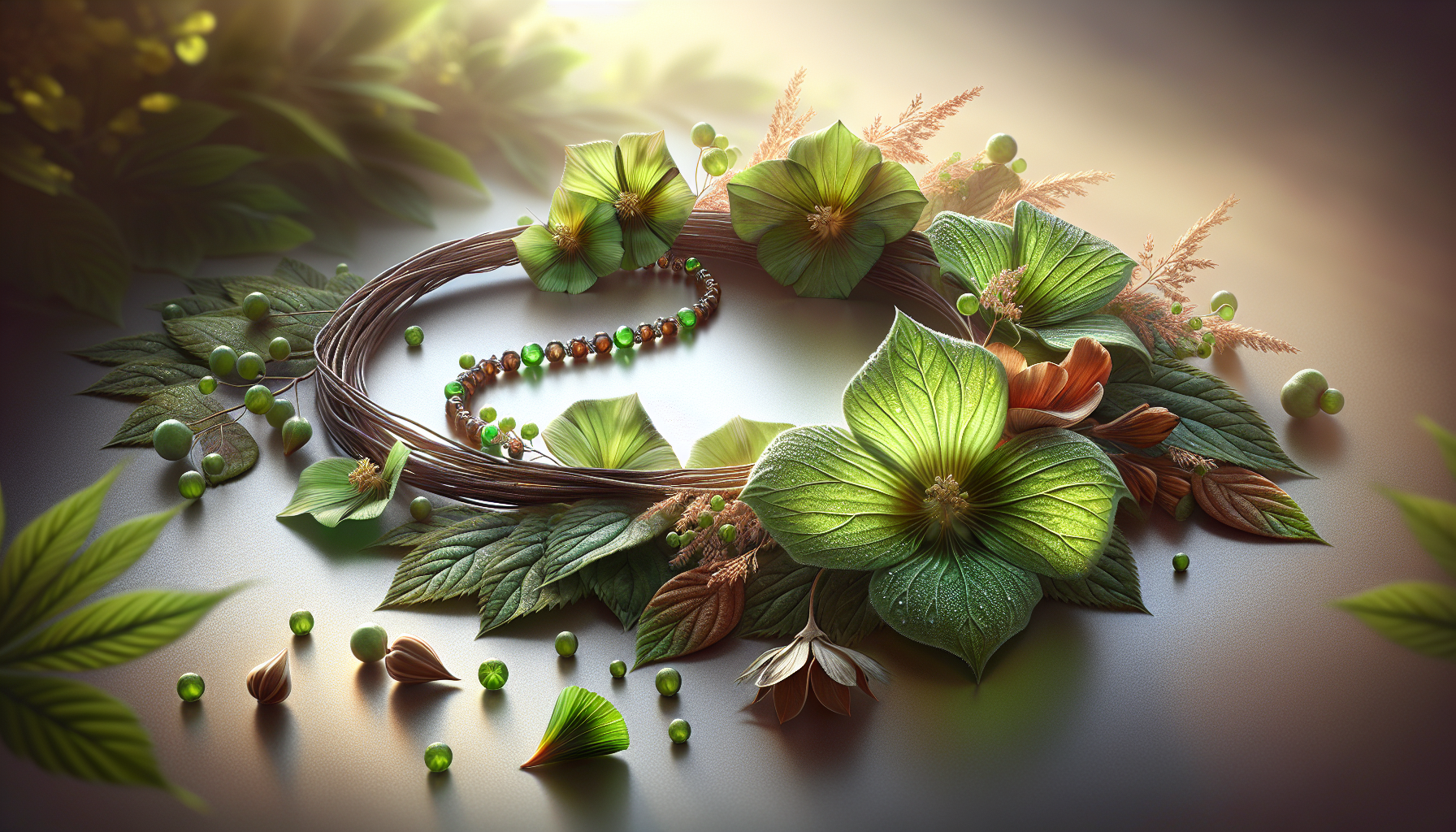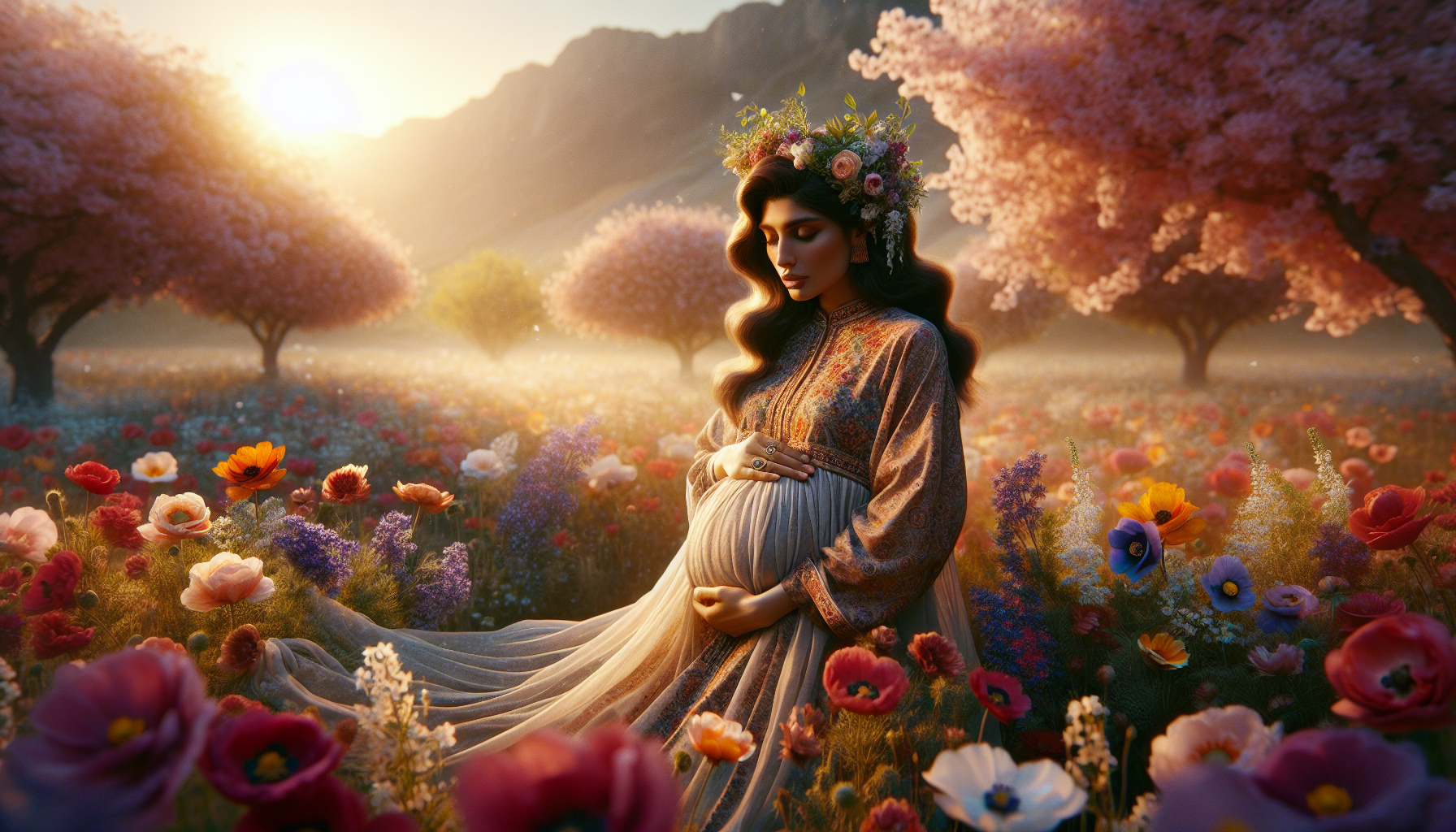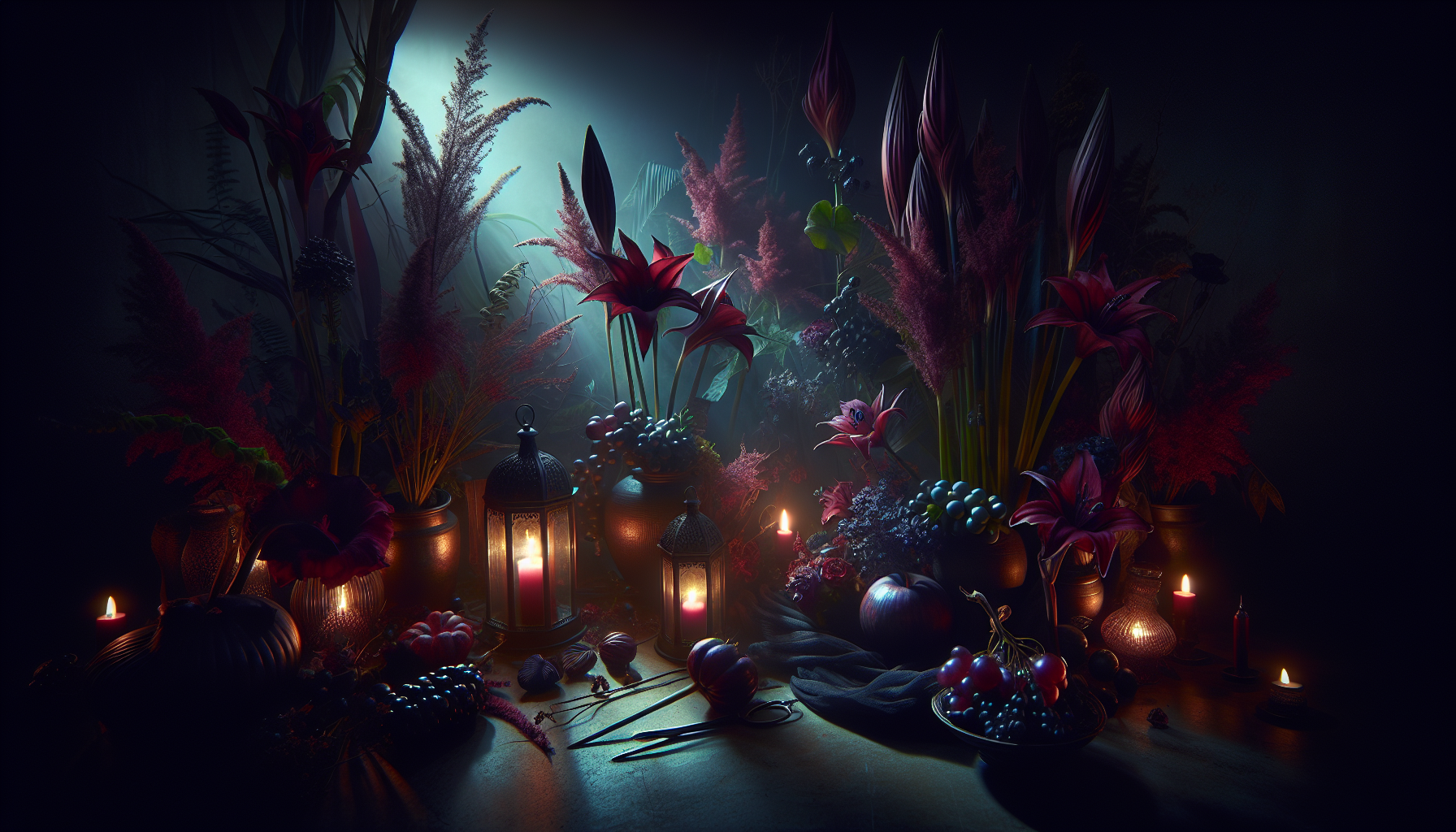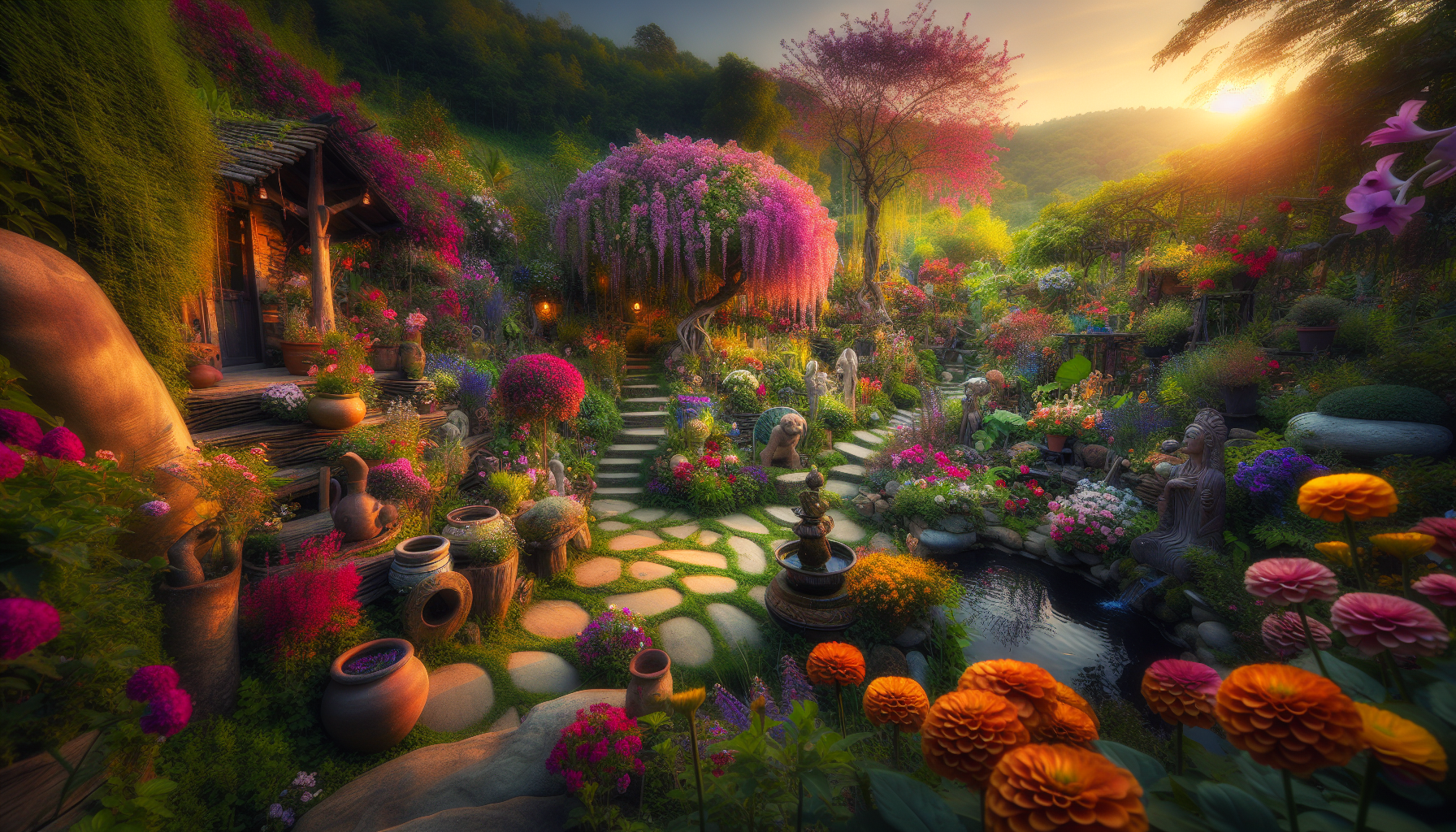Anúncios
In the grand tapestry of human history, mythology emerges as a vibrant thread, weaving together the cultural, spiritual, and philosophical beliefs of ancient civilizations. These myths, with their captivating narratives and intricate symbolism, serve as windows into the souls of the societies from which they originate. Among the plethora of symbols embedded within these ancient tales, flowers hold a unique and enchanting place. 🌸 They are not mere decorative elements but profound carriers of meaning, each petal imbued with stories and secrets waiting to be discovered. As we embark on this exploration of symbolic flowers in mythology, prepare to uncover the hidden messages they convey and the roles they play in shaping the mythic landscape.
Anúncios
From the fragrant lotus of the Egyptian pantheon to the ethereal sakura blossoms in Japanese legends, flowers have been revered and immortalized in mythological lore across cultures. They speak a language of their own, a mystical dialect that transcends time and geography. Each bloom is a character in its own right, with tales of creation, destruction, love, and transformation. As we delve into these stories, we will see how flowers are not only tokens of beauty but also symbols of deeper philosophical ideas and natural phenomena. Through this lens, we gain insight into how ancient peoples interpreted the world around them and sought to explain the mysteries of existence.
In ancient Greece, the mythology surrounding flowers like the narcissus and hyacinth provides rich narratives of vanity, transformation, and rebirth. These stories, often tied to tragic figures and divine interventions, offer a glimpse into the values and morals that shaped Greek society. The narcissus, for instance, tells the tale of a beautiful youth who fell in love with his own reflection, ultimately leading to his demise. This myth serves as a cautionary tale against the perils of excessive self-love and the fleeting nature of beauty. Similarly, the hyacinth tells a story of love and loss, as the flower sprang from the blood of a beloved friend of Apollo, symbolizing the eternal cycle of life and death.
Anúncios
Moving eastward, the symbolism of flowers in Hindu mythology presents a rich tapestry of spiritual and metaphysical concepts. The lotus, revered in many Eastern traditions, is a symbol of purity, enlightenment, and divine beauty. Rooted in the mud yet blossoming above the water’s surface, it represents the soul’s journey toward enlightenment, rising above worldly desires to attain spiritual awakening. This profound symbolism is reflected in the depictions of deities like Vishnu and Lakshmi, often shown seated on a lotus, signifying their divine purity and transcendence. By understanding these symbols, we gain a deeper appreciation for the spiritual aspirations and philosophical underpinnings of ancient Indian culture.
As we conclude our journey through the mystical language of flowers in mythology, we will explore the universal themes that these symbols evoke. Themes of love, beauty, mortality, and rebirth are woven into the fabric of these tales, reflecting the human condition’s complexities and eternal questions. 🌺 By examining these symbolic flowers, we not only gain insight into ancient civilizations but also uncover enduring truths about ourselves. So, let us step into this enchanting garden of myths, where each flower tells a story, and every story holds a lesson, waiting to be unearthed and cherished.
The Power of Flowers in Mythology
Mythology, with its intricate narratives and vivid imagery, often uses symbols to convey profound truths and lessons. Among these symbols, flowers hold a significant place, embodying beauty, purity, and a myriad of human emotions. Across different cultures and epochs, flowers have been woven into the fabric of mythological tales, each carrying its unique symbolic weight. From the enchanting lotus of Hindu mythology to the tragic narcissus of Greek lore, flowers reveal the timeless connections between nature and human experience.
In ancient Greece, flowers frequently appear in myths, serving as symbols of love, transformation, and sometimes, tragedy. The myth of Narcissus, for example, explores themes of vanity and self-obsession. Narcissus, a beautiful youth who scorned those who loved him, became enchanted by his own reflection in a pool of water. Unable to tear himself away, he eventually perished, and in his place, grew the flower that bears his name today. This tale not only explains the origin of the narcissus flower but also serves as a cautionary story about the dangers of self-admiration and hubris.
In Hindu mythology, the lotus is a potent symbol of purity, enlightenment, and rebirth. It is often depicted in association with gods and goddesses, emphasizing their divine nature and transcendent qualities. The lotus grows in muddy waters yet emerges pristine and beautiful, symbolizing the soul’s journey towards enlightenment and purity despite the challenges of the material world. The sacredness of the lotus is evident in numerous Hindu texts, where it represents spiritual awakening and the promise of divine wisdom.
The role of flowers in mythology is not confined to beauty and enlightenment. They are also seen as powerful tools for communication and transformation. In the Norse myths, the flower Baldr’s brow is said to have grown from the tears of the goddess Frigg, who mourned the death of her son Baldr. This narrative highlights the deep emotional resonance that flowers can hold, representing loss, love, and the hope of renewal even in the face of tragedy.
Flowers and Their Symbolism in Various Cultures
Flowers in mythology serve as bridges between the mortal and the divine, embodying complex ideas and emotions in simple, natural forms. The cultural significance of flowers varies widely, reflecting the diverse ways humans have understood and interacted with the natural world. Let’s explore how different cultures have used flowers symbolically in their mythological narratives.
In ancient Egyptian mythology, the lotus was revered as a symbol of creation and rebirth. It was believed that the sun god Ra emerged from a lotus flower that rose from the primordial waters of Nun. This association with the sun god imbued the lotus with life-giving properties, symbolizing the cycle of life, death, and rebirth. The lotus’s daily blooming and closing with the sun’s cycle further reinforced its connection to the idea of eternal renewal and regeneration.
In contrast, Celtic mythology often featured the rowan tree, whose white flowers were seen as protective symbols against malevolent forces. The Celts believed that the rowan tree had magical properties and was a gateway between the physical and spiritual realms. Its flowers, berries, and leaves were used in rituals to ward off evil spirits, highlighting the protective and mystical attributes associated with this plant in Celtic folklore.
In Chinese mythology, the peony holds a place of honor as a symbol of wealth, power, and honor. Known as the “king of flowers,” the peony was often depicted in imperial art and gardens, symbolizing prosperity and status. The flower’s lush, full blooms and vibrant colors made it a favorite among emperors and a symbol of the prosperity and abundance that they hoped to bestow upon their realms.
The symbolic use of flowers in these myths reflects the human desire to find meaning and order in the natural world. By imbuing flowers with symbolic significance, ancient cultures were able to express complex ideas and emotions in a way that was accessible and resonant with their audiences. These floral symbols continue to be a source of inspiration and reflection, allowing us to explore the timeless themes of love, loss, and transformation.
Comparative Analysis of Symbolic Flowers
| Flower | Culture | Symbolism |
|---|---|---|
| Lotus | Hindu, Egyptian | Purity, Rebirth, Enlightenment |
| Narcissus | Greek | Vanity, Self-Reflection |
| Peony | Chinese | Wealth, Prosperity, Honor |
| Rowan | Celtic | Protection, Spirituality |
The Influence of Mythological Flowers on Art and Literature
Flowers in mythology have not only served as symbolic motifs in ancient tales but have also profoundly influenced art and literature throughout history. Their representations in various art forms have continued to inspire artists and writers, transcending time and culture.
In Renaissance art, the depiction of mythological flowers often carried deep symbolic meaning. Painters like Botticelli and Michelangelo frequently included flowers in their works to symbolize purity, love, and divine beauty. For instance, in Botticelli’s “Primavera,” the presence of various flowers, including the symbolic roses and violets, adds layers of meaning to the scene, illustrating themes of love, fertility, and the divine order of nature.
Literature, too, has been deeply influenced by the symbolic language of flowers. In the 19th century, the “language of flowers” became a popular literary theme, where flowers were used to convey hidden messages and emotions. In works like Shakespeare’s plays, flowers often serve as metaphors for characters’ emotions and fates. Ophelia’s floral imagery in “Hamlet,” for example, symbolizes her innocence, madness, and eventual tragic death.
In contemporary literature, mythological flowers continue to serve as powerful symbols. Authors often use them to explore complex themes such as identity, transformation, and the relationship between humans and nature. The symbolic power of flowers allows writers to delve into these themes in nuanced and evocative ways, adding depth and richness to their narratives.
Watch and Learn
To gain a deeper understanding of the symbolic significance of flowers in mythology, consider watching the video below. It offers an insightful exploration of the role of flowers in mythological narratives and their enduring impact on art and culture:
The Power of Myth: Flowers in Mythology – Mythological Storyteller
Exploring the Timeless Appeal of Mythological Flowers
The enduring allure of mythological flowers lies in their ability to encapsulate the complexities of human experience. They serve as reminders of the interconnectedness between humans and nature, offering insights into the cultural and spiritual values of ancient societies. As symbols of beauty, purity, and transformation, these flowers continue to captivate our imaginations and inspire us to seek meaning in the world around us.
Mythological flowers offer a window into the past, revealing how ancient cultures understood and interpreted the natural world. They invite us to reflect on the timeless themes of love, loss, and rebirth, encouraging us to find beauty and meaning in the cycles of life. Whether in ancient myths or modern interpretations, the symbolic language of flowers continues to resonate, reminding us of the enduring power of nature’s most delicate creations. 🌺
- Explore the symbolic meanings of flowers in different mythologies.
- Understand the cultural significance of flowers in ancient societies.
- Discover the impact of mythological flowers on art and literature.
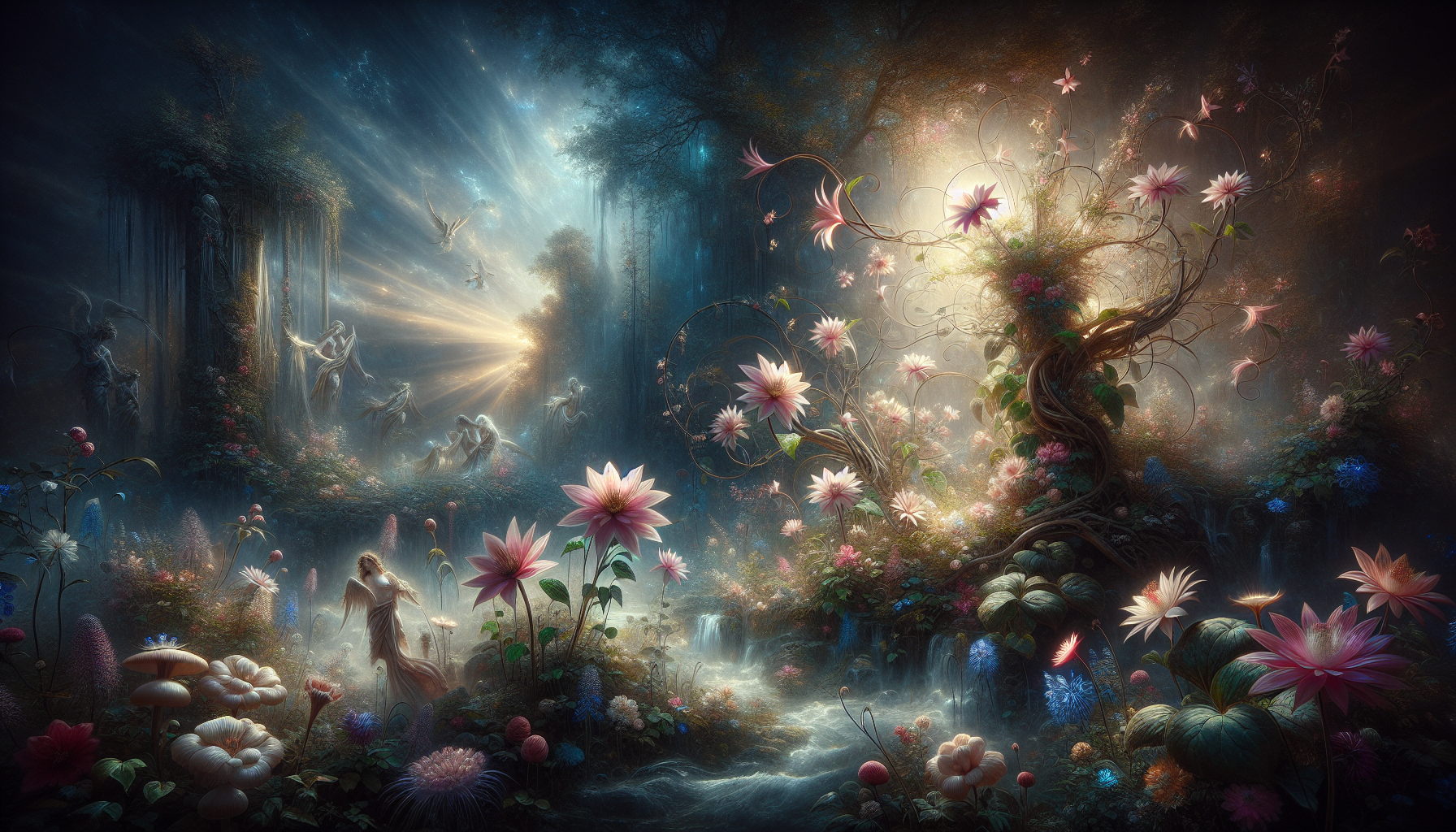
Conclusion
In conclusion, the exploration of symbolic flowers in ancient tales unveils a rich tapestry of meaning woven into the very fabric of mythology. As we have journeyed through the narratives, it becomes evident that flowers serve as more than mere decorative elements; they are powerful symbols that convey profound messages about life, death, love, and the divine. Each bloom, with its unique characteristics and associations, becomes a vessel of cultural and spiritual significance.
Throughout this article, we have delved into the stories of various mythologies—from the lotus in Egyptian lore to the sakura in Japanese traditions, and the rose in Greek myths. These flowers, each in their own way, carry potent symbolism. The lotus, rising pristine from muddy waters, speaks to themes of rebirth and enlightenment. The cherry blossom, with its ephemeral beauty, reminds us of the fleeting nature of life, urging us to cherish every moment. Meanwhile, the rose, intertwined with tales of love and beauty, serves as a timeless emblem of passion and desire.
Furthermore, these mythological flowers reveal the interconnectedness of human cultures. Despite geographical and temporal distances, many civilizations have attributed similar meanings to the same flowers, suggesting a shared human experience. This universality underscores the timeless relevance of these symbols, inviting us to find common ground in a world often divided by differences.
The exploration of these floral symbols also encourages us to reflect on the enduring power of storytelling. Mythology, with its rich tapestry of narratives, has always served as a mirror to the human soul, reflecting our deepest fears, desires, and hopes. Flowers, within these stories, act as poignant reminders of our own journey, urging us to seek beauty and meaning even amidst adversity.
It is essential to recognize the continued relevance of these ancient symbols in contemporary society. As we face unprecedented global challenges, the lessons embedded in these tales of symbolic flowers offer guidance and inspiration. They teach us resilience, the importance of cherishing the present, and the enduring power of love and connection.
In light of these insights, I encourage you, dear reader, to carry forward the wisdom of these mythological flowers. Apply their lessons to your own life, whether it be by embracing change, appreciating the beauty in everyday moments, or nurturing your connections with others. Moreover, share this newfound understanding with those around you. Engage in discussions, both online and offline, to explore how these ancient symbols can illuminate our modern world.
🌸 As you ponder these narratives, consider how you might integrate the symbolism of flowers into your personal and professional life. Whether you are an artist, a writer, a teacher, or a leader, these stories can inspire creativity, foster empathy, and enhance your understanding of the human experience.
In closing, the mystical language of mythology, expressed through the symbolism of flowers, offers a profound lens through which to view our world. By appreciating the depth of these ancient tales, we open ourselves to a richer, more nuanced understanding of life. I invite you to continue this exploration, to share your thoughts and insights, and to inspire others with the beauty and wisdom of these timeless stories.
For further exploration of this topic, consider visiting National Geographic for articles on cultural symbolism or The British Museum for insights into ancient artifacts. These resources provide additional context and depth to the symbolic meanings discussed.
May the wisdom of mythological flowers continue to bloom in your life, offering inspiration and guidance as you navigate your own story. 🌷
Toni Santos is a visual storyteller and artisan whose creations celebrate the poetry of the natural world. Through his thoughtful artistic lens, Toni captures the elegance of botanical forms, transforming them into meaningful expressions of symbolism, resilience, and timeless beauty.
His journey is deeply rooted in a passion for flora and the mysteries they carry. From the shape of a petal to the curve of a vine, each design Toni brings to life reflects a deeper narrative — one of growth, transformation, and harmony with nature. Whether crafting symbolic floral jewelry, enchanted botanical illustrations, or seasonal visual studies, Toni’s work evokes the quiet magic found in Earth’s most delicate details.
With a background in handcrafted artistry and visual design, Toni blends technique with intention. His creations do more than decorate — they speak, often inspired by ancient meanings behind flowers, the cycles of the seasons, and the invisible bonds between nature and spirit.
As the creative voice behind Vizovex, Toni shares this botanical journey with the world, offering curated stories, handcrafted collections, and thoughtful articles that help others reconnect with nature’s symbolism and artistic essence.
His work is a tribute to:
-
The quiet power of flowers and their messages
-
The art of visual symbolism in everyday life
-
The beauty of slowing down to see what’s hidden in plain sight
Whether you’re an artist, a nature lover, or someone drawn to the deeper meanings behind the natural world, Toni welcomes you to explore a space where aesthetics meet soul — one petal, one story, one creation at a time.


